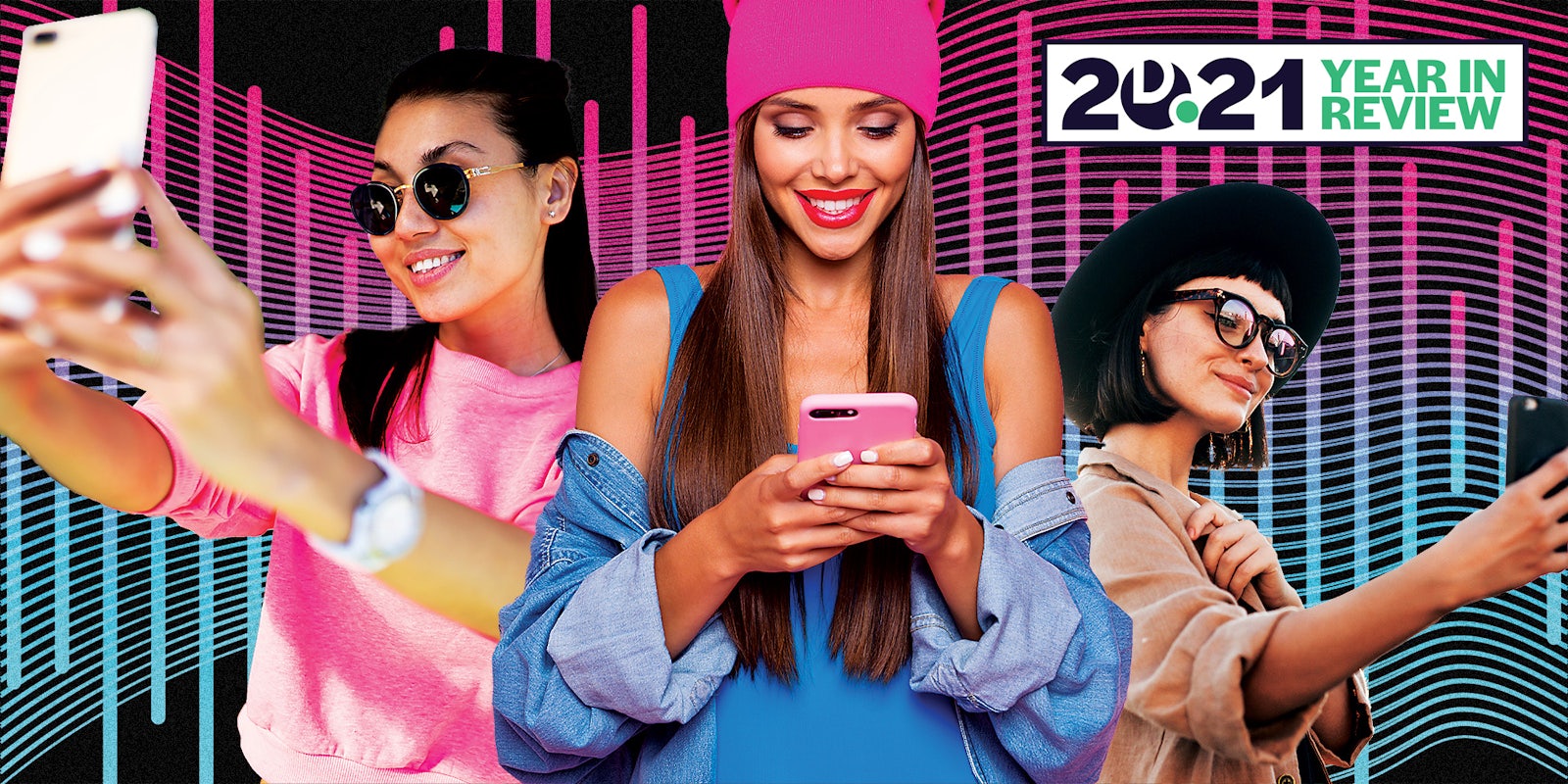Back in April, TikToker rosiereallysucks captured the residue left behind after scrolling TikTok: a chaotic chorus of audio samples that builds up and replays long after you’ve closed the app.
It’s hard to describe what TikTok sounded like in 2021, but that video is a good example. There was a lot of noise: The app hit 1 billion users this year. In terms of music, a sample of Doja Cat’s “Kiss Me More” was so ubiquitous that the actual radio version feels like an impostor. There were surprising collaborative trends, like duets of sea shanty “The Wellerman” and june_banoon’s cat ballad “Here Comes the Boy.”
Perhaps in 2021, it was more about the evolution of voice and language on TikTok.
In September, Jade Brandt mimicked a kind of vocal fry-adjacent delivery that has become ubiquitous in this space. It has more than 1 million views. One of the top comments asks: “Is this our generation’s transatlantic accent??”
Writer Olivia Yallop recently pondered why it seems everyone on TikTok sounds the same now. The piece explores “TikTalk,” a “specific register commonly used to narrate front-facing camera storytelling videos, filmed predominantly by young women.” Essentially, it’s meant to signify that you’re an influencer, but as Yallop notes, it’s been duplicated outside of American TikTok, which “speaks to the extent to which global influencer culture is dominated by American tastes and aesthetics.”
But this register is influenced by the transatlantic or Mid-Atlantic accent, a mix of American and British accents used in old Hollywood and meant to convey status and glamour, two things TikTokers are certainly concerned with. Serena Shahidi, aka glamdemon2004, has become so well-known for her way of speaking that people have started imitating her, though she—and other creators—pushed back on the notion that one person owns that style of delivery.
“She didn’t invent being a hot cunt,” said raynecorp in May.

Speaking to Penn Today in August, linguist Nicole Holliday said TikTok is especially influential for changes in language because it’s audio and visual: “If you were learning a second language, you wouldn’t just read texts. That doesn’t get you very far; you need to actually be talking with people face-to-face.”
Is a new kind of language emerging on TikTok? The comment sections are certainly fertile ground. TikToker britmonster1028 imagined a future in which linguists looked to back at TikTok for meaning: “Like imagine being a linguist studying TikTok comments and somebody says, ‘He’s running in lowercase.’”
And then there’s the continued appropriation of AAVE—African-American Vernacular English—in both content and comment sections. It even extended to certified pop stars. Earlier this year, vanillaabstract commented on a TikTok of a Black British woman who switched to an American accent, though it was more of an “amalgamation of different African-American accents across the United States.” They asked whether this is “a modern equivalent of the transatlantic accent.”
Other kinds of TikTok voices flourished during the pandemic: The “explainer” or “expert” voice, which can both inform and misinform, if one sounds confident enough. More ubiquitous is the TikTok text-to-speech voice. In September, TikTok’s parent company ByteDance settled a lawsuit brought by voice actor Beverly Standing, who claims the company used her voice for its text-to-speech feature without her permission. In May, the same month Standing sued, ByteDance introduced a new text-to-speech voice in North America, which, despite some early objections, quickly became the default voice.
Some tested its limits, however.
In August, TikTok rolled out other voice options, though the woman’s voice debuted in May is still the most popular. Last month, TikTok partnered with Disney for a text-to-speech feature, and users quickly noticed it had censored some words, like “gay” and “lesbian.”
While that rosiereallysucks TikTok from April could already have been updated several times over with new inescapable viral sounds, the way we consume sound on TikTok might be evolving. As Kate Lindsay notes for Embedded, a viral TikTok sound, which was used in a Lil Nas X TikTok that has more than 44 million views, sparked discussion about the value of viral audio, after it was pointed out that one of the men featured in the original video is currently unhoused and in need of help.
That opens up a lot of questions about how people could potentially compensate each other for viral sounds. But, as Lindsay points out, given how many people comment “Make this a sound” on certain TikToks, that poses a bigger question for 2022: What is all this noise worth?


